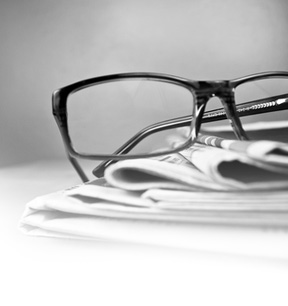Contents |
Seniors
Retinal disorders are a leading cause of vision loss in elderly people.As with every other part of the body your vision changes as a normal part of aging. Although visual changes are not preventable advances in technology have significantly decreased the inconvenience of vision problems. Aging can affect near distance and peripheral vision.
Common vision problems include:
- Presbyopia
- The development of cataracts
- Flashes and floaters
- Low vision
- Glaucoma
- Dry eyes
- Age-related Macular Degeneration
Retinal disorders are a leading cause of vision loss in elderly people. Early detection and treatment by your eyecare practitioner can slow or stop vision loss. Some of the common retinal conditions include:
- Macular Degeneration
- Retinal Detachment
- Diabetic Retinopathy
Low vision is another common result of ageing eyes. People with low vision have severely reduced visual acuities and/or significantly restricted fields of view. Low vision services do not aim to cure the cause of the vision problem rather to utilize a person's remaining vision to its fullest potential. A wide array of low vision aids and devices for various degrees and types of vision loss are available. These include materials to compensate for light and glare given the person's ability to operate the aids.
To help keep your eyes healthy small lifestyle changes might make a big difference. These include such things as:
- Increasing levels of lighting around the house
- Wearing sunglasses with ultraviolet light protection
- Having the correct eyewear for close work driving and other activities
- Being aware of any new or unusual eye symptoms
Regular eye examinations by your eyecare practitioner are essential to monitor the development of vision changes. Learn what to expect from an appointment with your eyecare provider. He or she will be able to determine the best form of corrective eyewear for you. These might include the following:
Reading Glasses
These are ideal for people who only have difficulty seeing printed matter. They may be worn solely for close work or may be worn in conjunction with contact lenses that are prescribed for distance vision. Reading glasses are available in a wide range of lightweight attractive designs. Inexpensive reading glasses are readily available over-the-counter at retail stores but your eyecare practitioner might prescribe higher quality lenses.
Multifocal and Progressive Lenses
Glasses with bifocal trifocal or progressive addition lenses (PALs) are the most common methods used for correcting presbyopia. Two or three sections make up the bifocal and trifocal lenses to enable vision at different distances. The upper portion of the lens has a prescription for distance vision while the lower portion contains a prescription for close work.
Advances in progressive lens materials have allowed companies to produce thin lightweight lenses known as multifocals without the distinctive line separating the visual fields. These provide wearers with a gradual change in prescription strength between distance and near vision. They have a clear 'corridor' where objects at an intermediate distance such as arm's length are in focus thereby avoiding a sharp image transition when eyes move from one distance zone to another.
Multifocal Contact Lenses
Multifocal contact lens technology has advanced considerably providing wearers with more comfort choice and style. These are available in either soft or rigid gas permeable materials. They offer the convenience of contact lenses with the ability to have clear distance intermediate and near vision. The popularity of these contact lens designs has resulted in numerous choices from most major contact lens companies.


